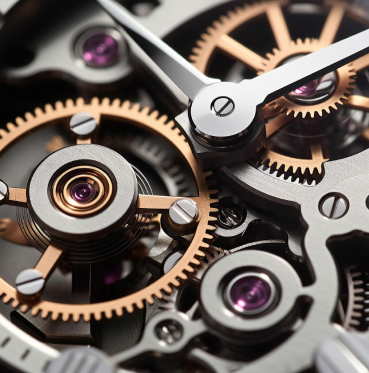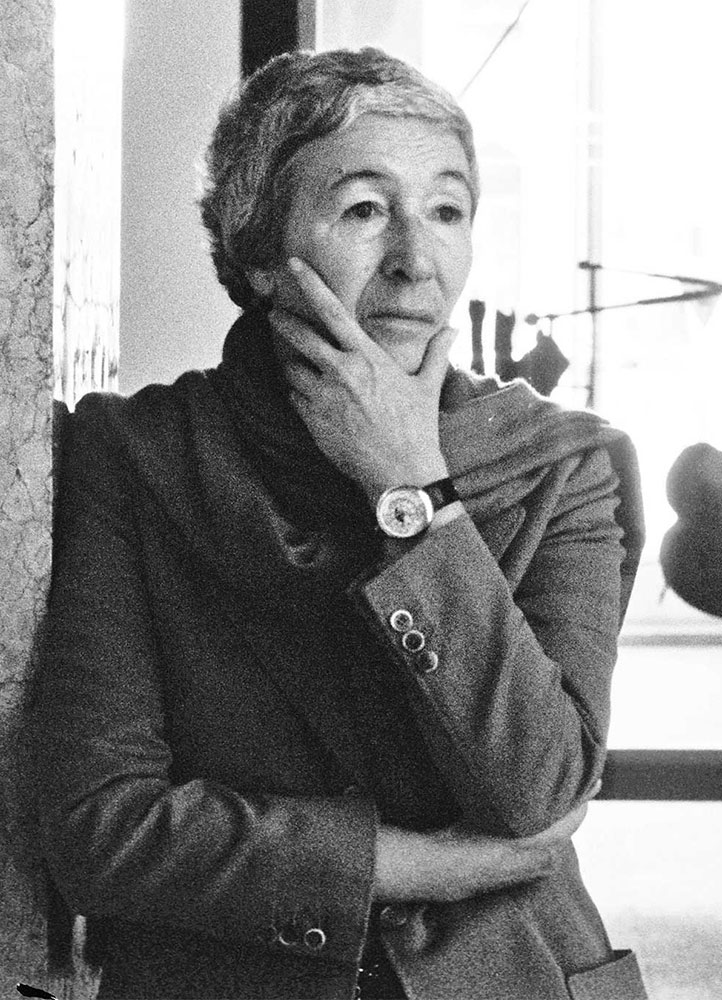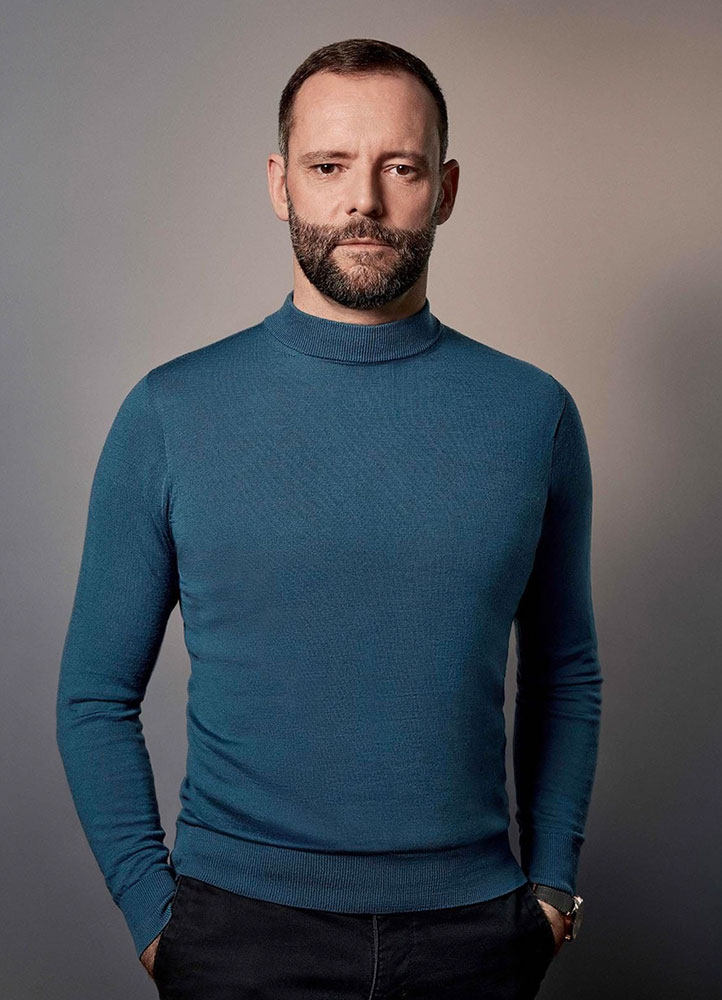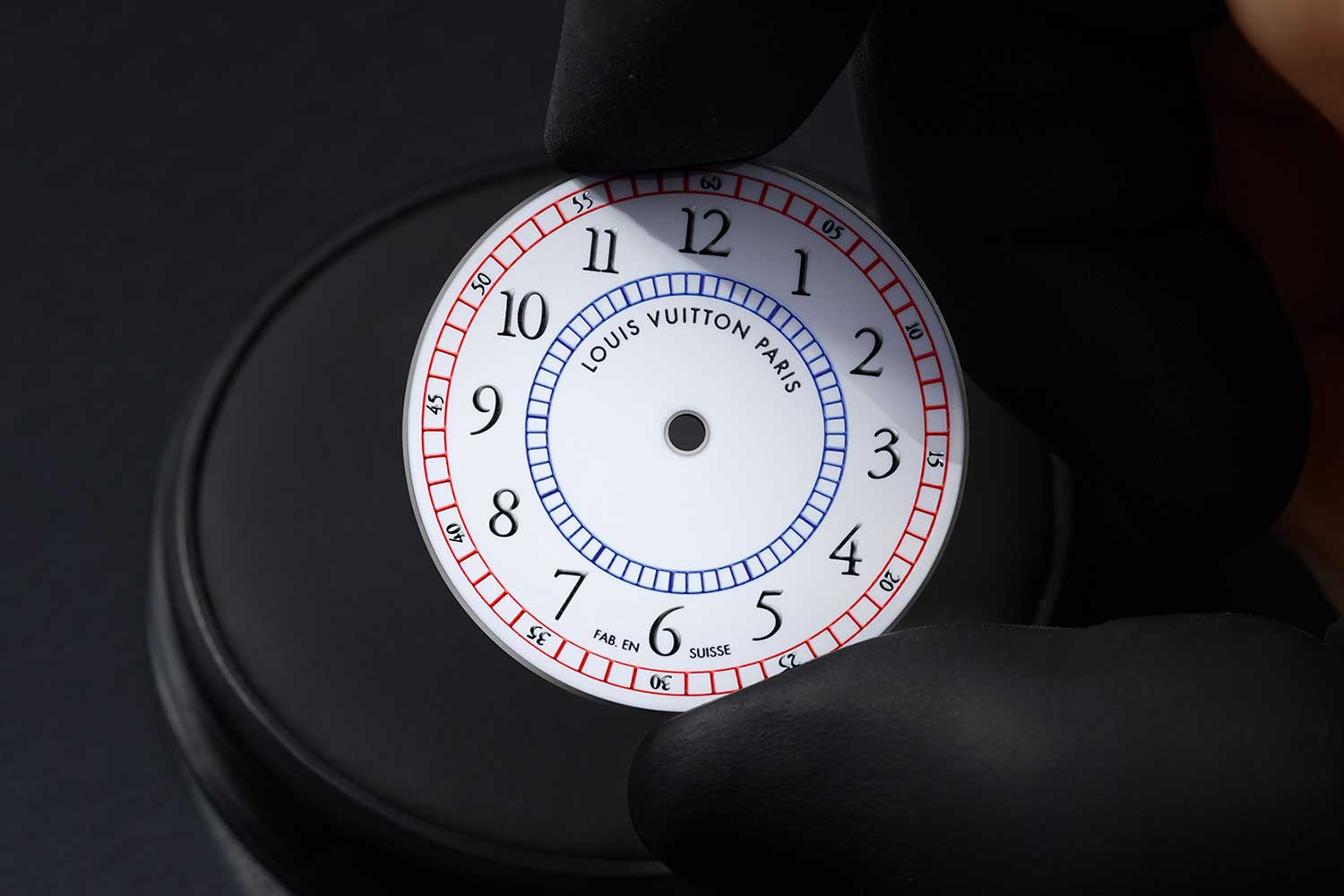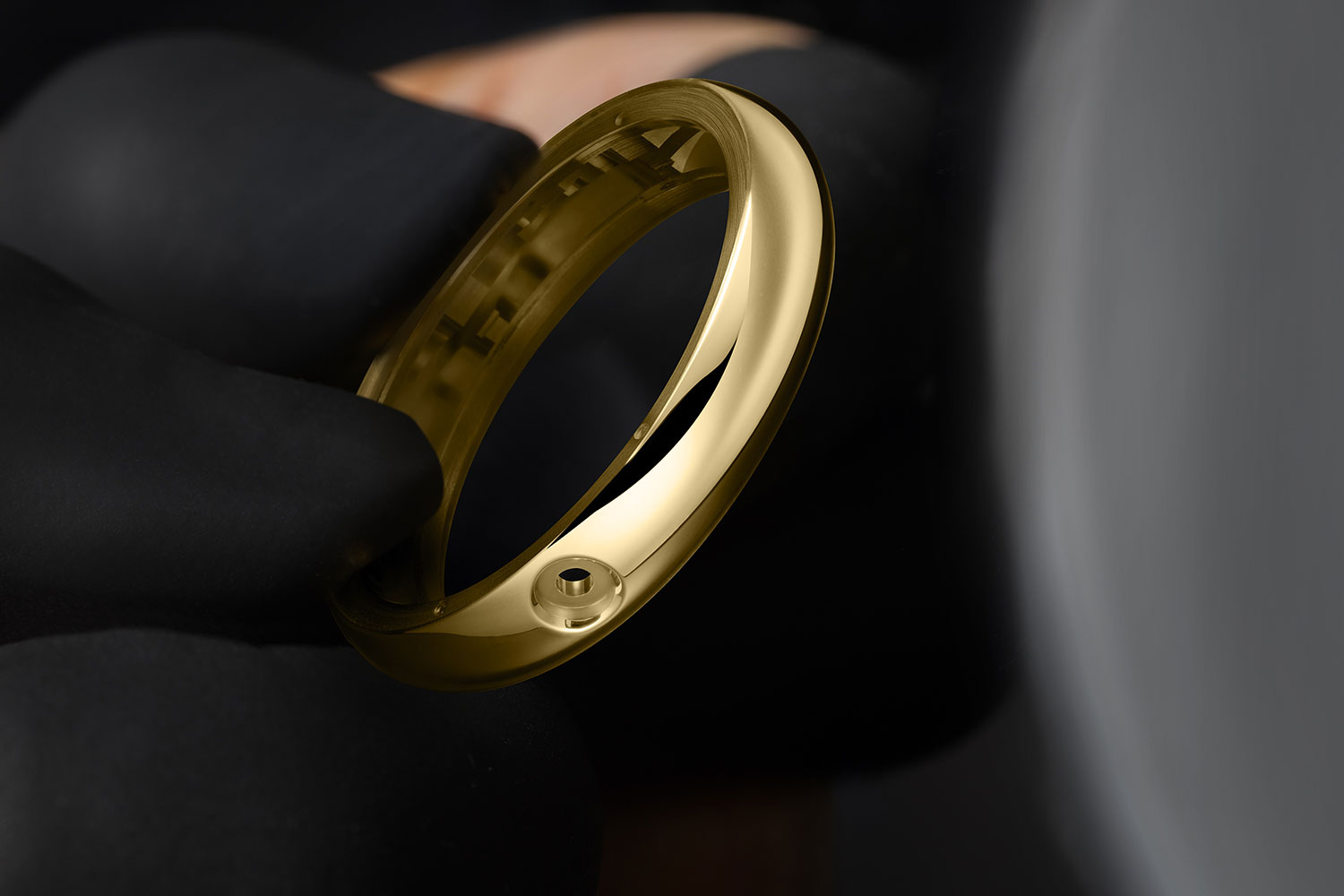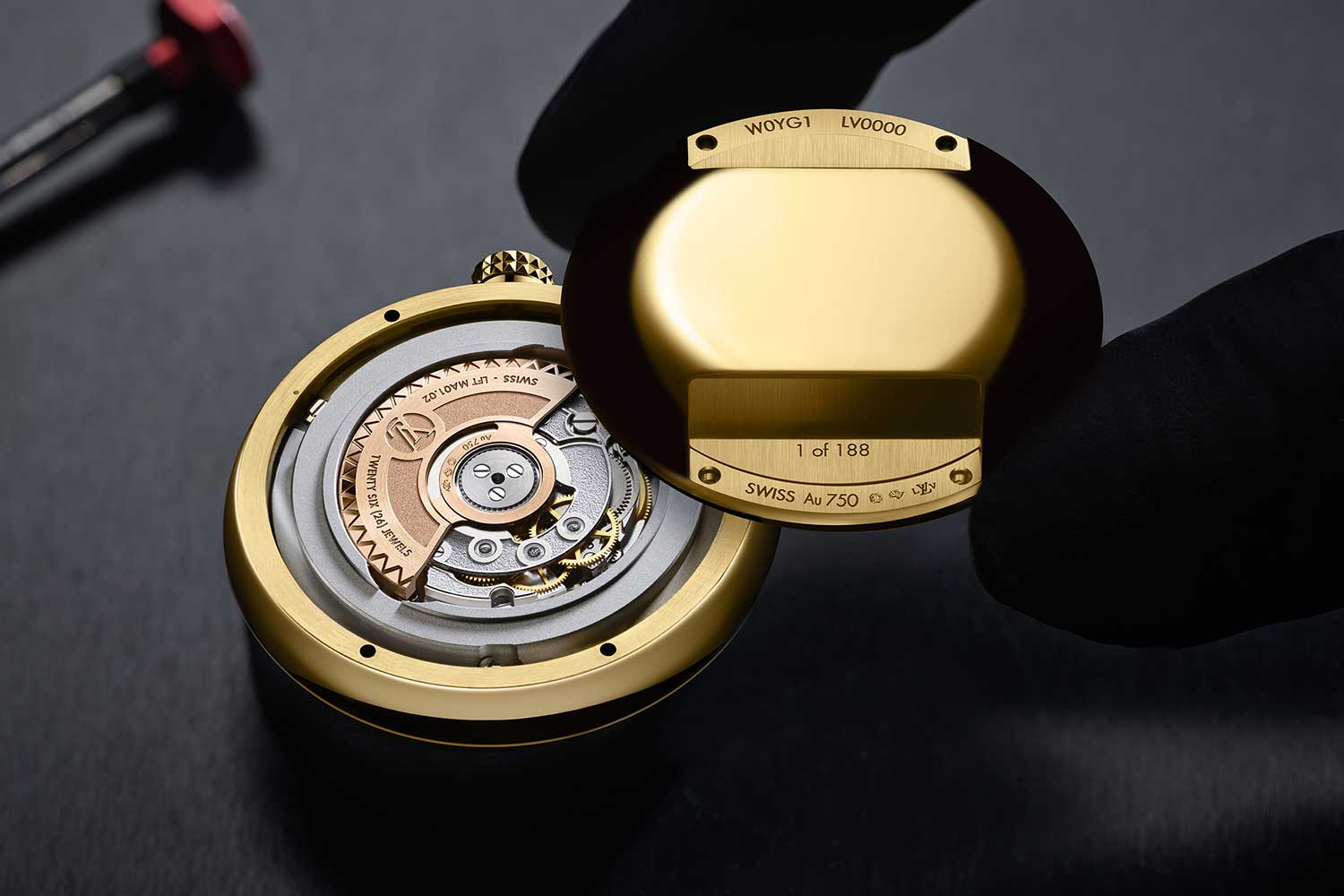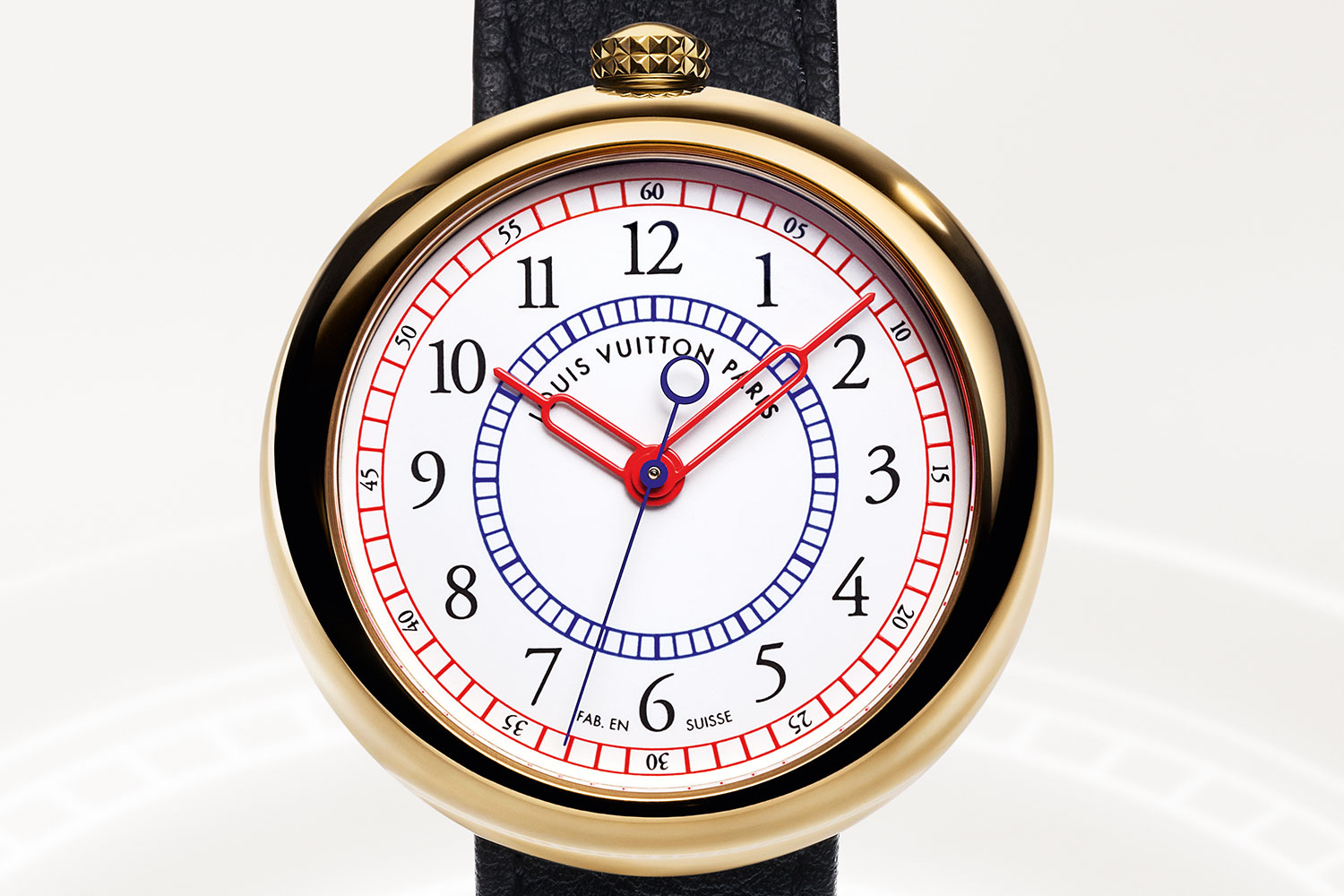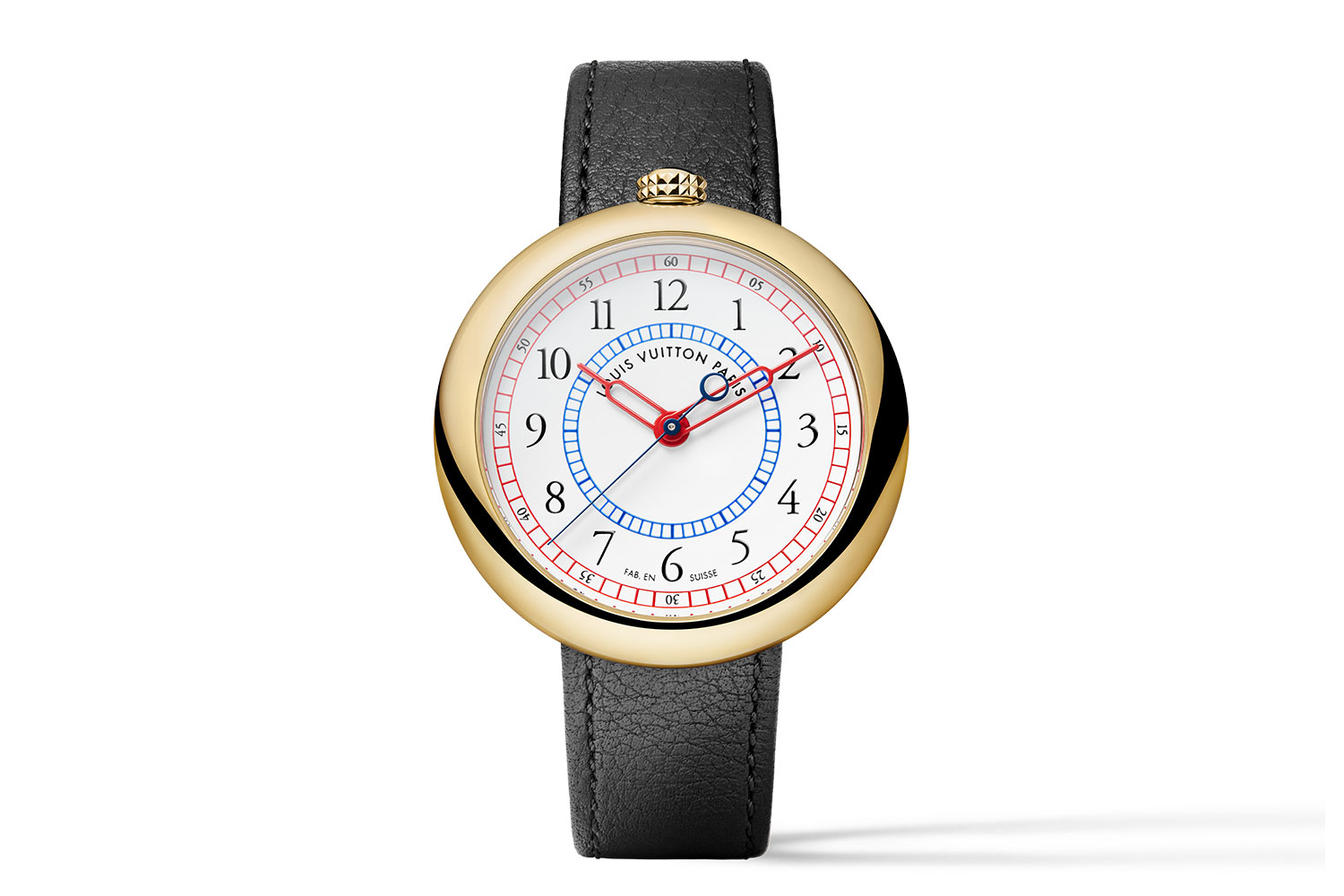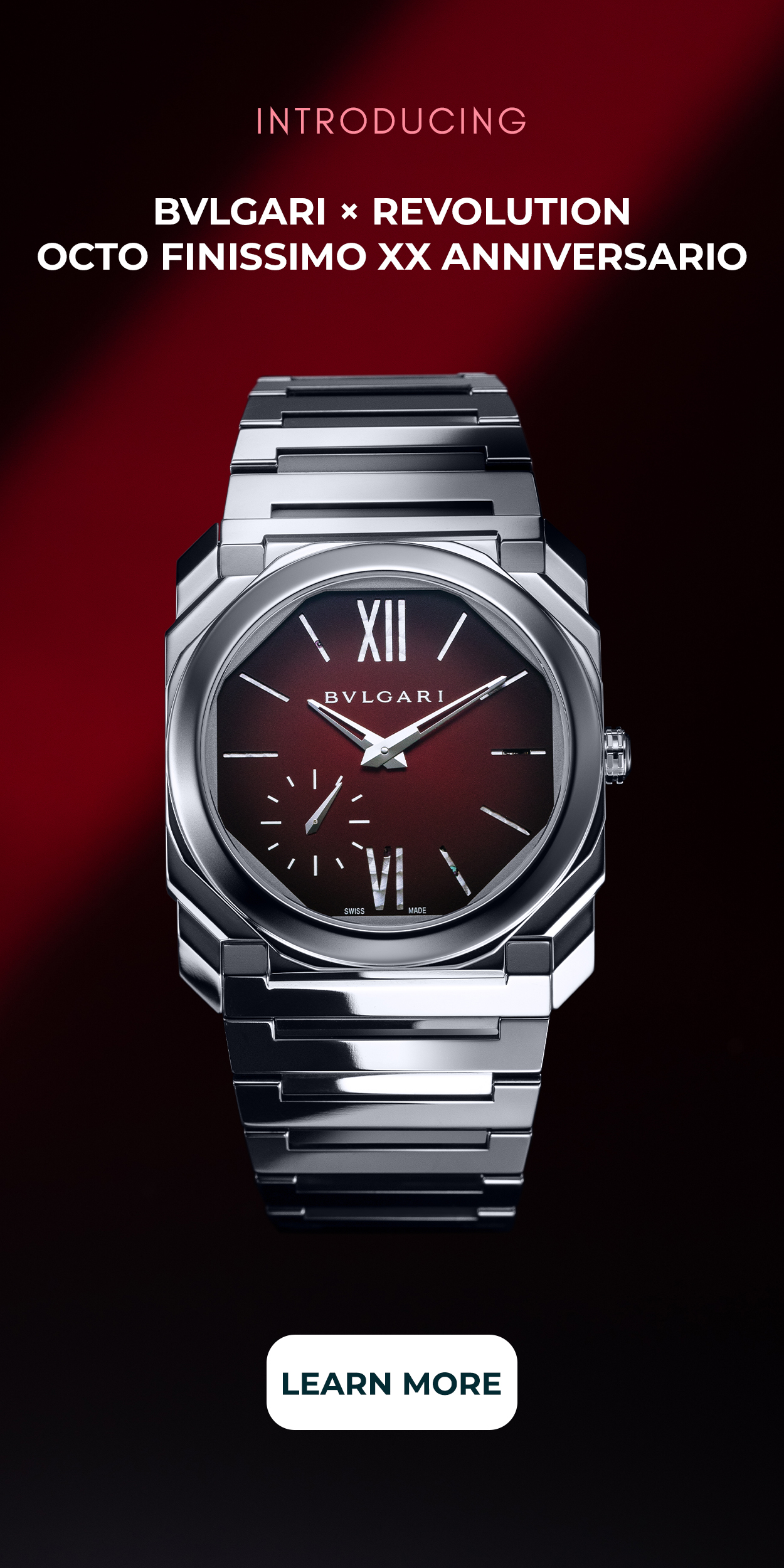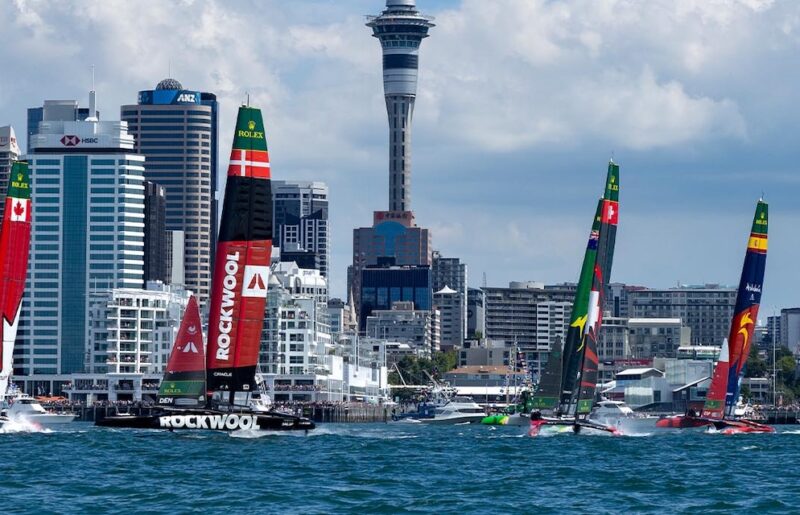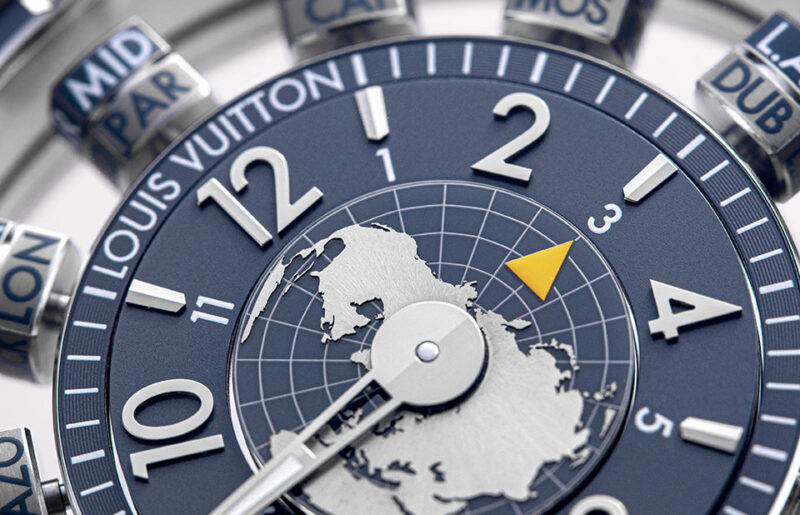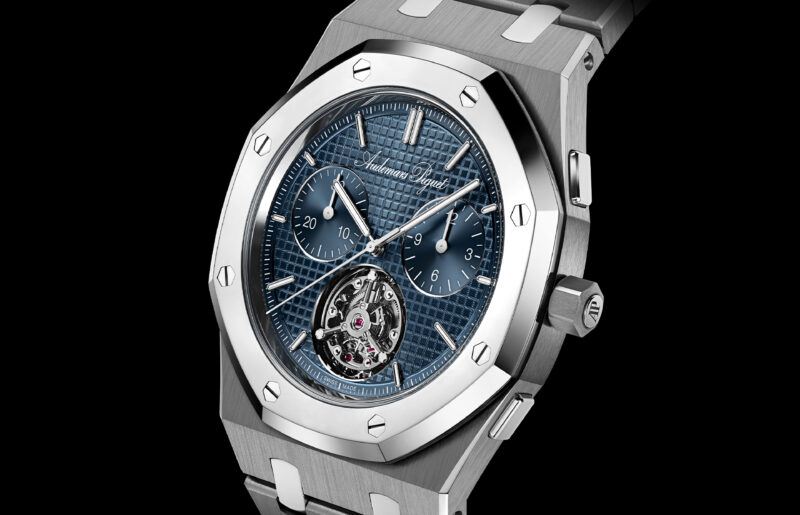Louis Vuitton Revives The Monterey: A Cult Classic Reborn
News
Louis Vuitton Revives The Monterey: A Cult Classic Reborn
Summary
Louis Vuitton entered watchmaking in 1988 with a confident debut that challenged Swiss orthodoxy. It launched a unique pebble-shaped object designed by one of the star architects of the day. Italian-born Gae Aulenti is best known for transforming Paris’s disused Gare d’Orsay into the world-famous Musée d’Orsay that it remains to this day.
She worked with Louis Vuitton to make the LV I and LV II with crown at 12, clean railtrack dial, lug-less case, traveler-ready functions, and, in the LV II, an early foray into ceramic. The message was clear: if Louis Vuitton was going to do watches, it would do them its own way.
Fast-forward to today. The Monterey returns as a modern interpretation crafted at La Fabrique du Temps Louis Vuitton, the manufacture Louis Vuitton acquired in 2011 that now handles movements, dials, cases, assembly and testing under one roof. The new watch is executed in yellow gold with a white Grand Feu enamel dial and — crucially — a mechanical heart in place of the original quartz. It’s limited to 188 pieces, the sort of number that is sure to stir the interest of collectors.
“Reinterpreting a creation means respecting its design and spirit,” says Matthieu Hegi, Artistic Director at La Fabrique du Temps Louis Vuitton. “We maintain the same graphic codes but strive for a more modern and elevated feel.” It’s a line you could write off as corporate, except the watch backs it up. The outline is faithful; the execution is grown-up.
Why the Monterey mattered the first time
To appreciate the new watch, it helps to revisit the watch landscape of the late 1980s. Quartz dominated — batteries had taken over, and although mechanical watchmaking was in recovery, it had not yet reached the full-on fightback of the 1990s.
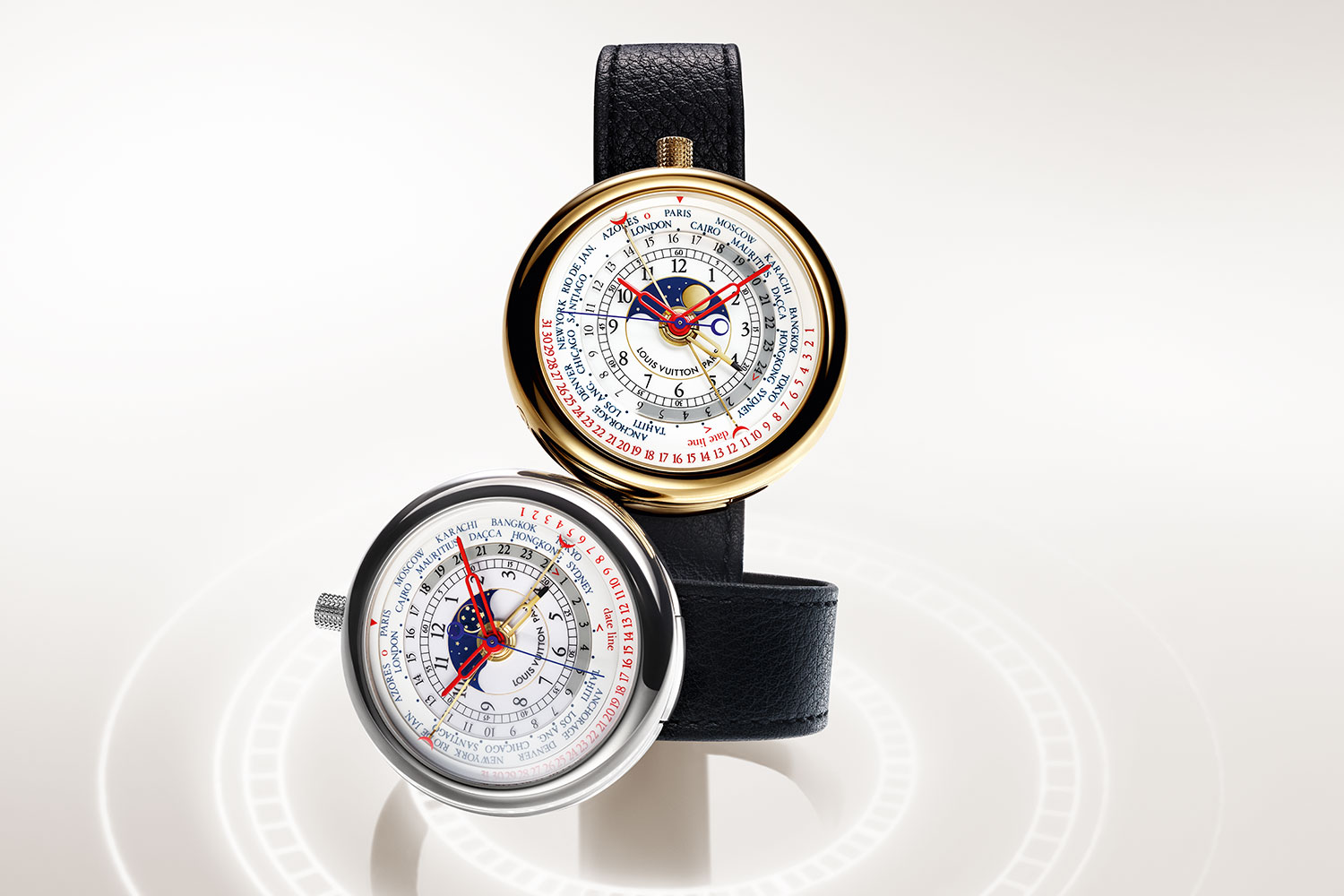
Aulenti designed the LV I & II (aka the original Monterey) for Louis Vuitton, featuring the crown at 12 within a lug-less case
The mood of the 1980s was also shaped by the Memphis Group, aka Memphis Milano. The collective, led by architect and designer Ettore Sottsass, threw the modernist rulebook out the window. Memphis designs were loud, geometric and defiantly unserious, like candy-colored laminates, zigzag chair backs and squiggle-print tables.
Louis Vuitton’s decision to commission the cultural force that was Aulenti signaled an intention to treat the watch as an architectural object. The LV I and LV II read as modernist artifacts first and “Swiss watches” second.
- LV I
- LV II
The details were decisive. LV I arrived as a lug-less gold pebble with the crown at noon, an intentional nod to pocket watches and Louis Vuitton’s own history of travel. Dials were clear and functional, with variations for date, second time zones, even world time — designed for clients who crossed borders as a matter of course.
LV II sharpened the point by pioneering zirconia-based ceramic in deep black or green, a material that only a handful of manufactures could serially machine at the time. Bringing it to life required a pragmatic partnership with IWC in Schaffhausen, one of the few players with ceramic case expertise in the late 1980s — an early example of Louis Vuitton reaching beyond fashion for technical execution. LV II also added an alarm to the mix. Together, the two watches described a Louis Vuitton philosophy: tactile, modern, useful and serenely un-Swiss in silhouette.
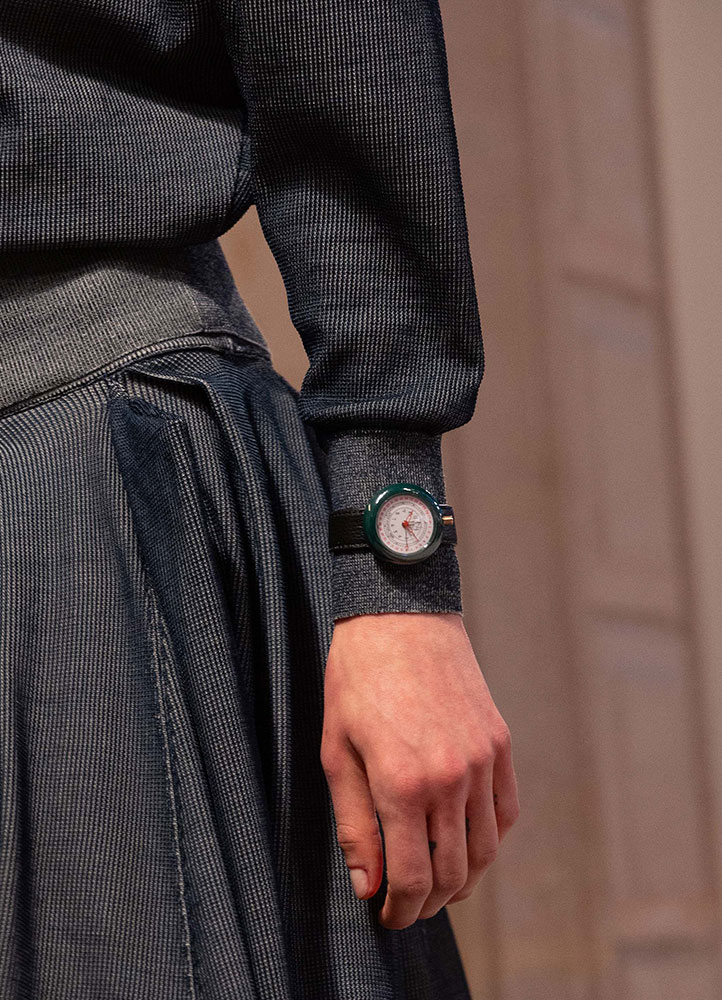
The revival of the Monterey was first teased at the Louis Vuitton Women’s Fall-Winter 2025 show in March
Collectors nicknamed it the Monterey, a play on the French word for watch, montre. The name stuck, and over the years it developed a cult following. Vintage examples surface infrequently at dealers and auctions, and when they do, the conversation they spark is less about price and more about point of view. Recently, Nicolas Ghesquière paired archival LV II pieces with looks in Louis Vuitton’s Women’s Fall–Winter 2025 show in Paris — less costume than continuity. The lines Aulenti drew still hold.
Louis Vuitton wasn’t alone in treating watches as design-led objects in the 1980s. Cartier released the Pasha in 1985, a bold, water resistant circle-within-a-square that was equal parts jewelry and watch. Porsche Design, though rooted in the 1970s, was still influencing the decade with its pared-back chronographs and titanium experiments. Rado would soon launch the Ceramica (1989), an all-ceramic block of geometry that echoed industrial design more than Swiss heritage. Bvlgari had doubled down on the engraved “BVLGARI BVLGARI” bezel of 1977, leaning into Roman architectural codes. Against this backdrop, Louis Vuitton’s Monterey was logical. The point was not to follow the others, but to ask what a Louis Vuitton watch should look like.
Who was Gae Aulenti, the architect behind the Monterey?
The Monterey wasn’t just Louis Vuitton’s first watch; it was Aulenti’s only watch design. That fact alone gives the piece cultural weight. Aulenti’s career ranged across disciplines. Beyond the Musée d’Orsay, she designed the interiors for the Centre Pompidou in Paris, the expansion of Milan’s Palazzo Grassi, and numerous stage sets and showrooms. Her furniture — most famously the Pipistrello lamp and Locus Solus chairs — embodied a lively expansion of modernism. Her talent was to bend geometry into bold, relatable forms.
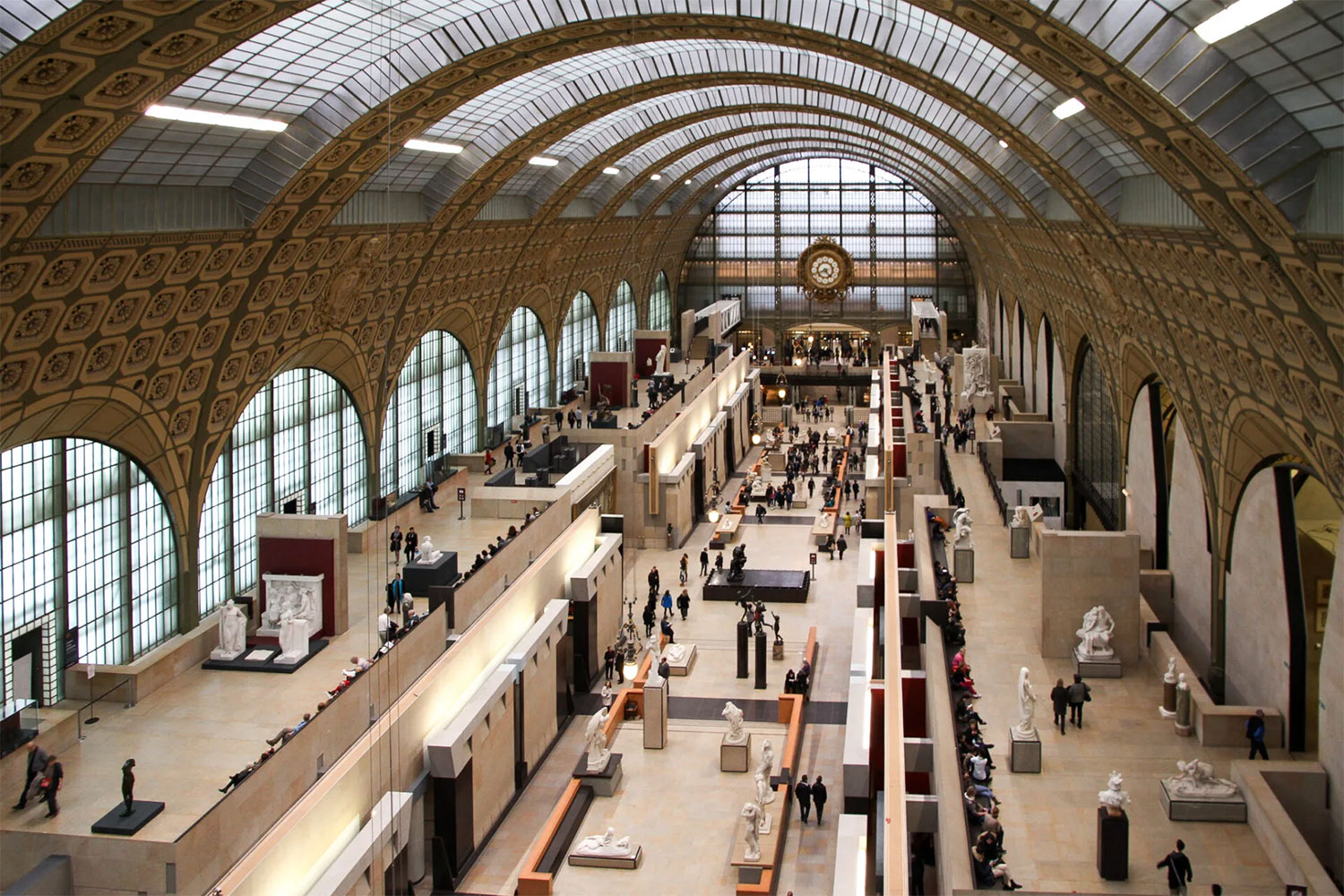
Gae Aulenti was a prolific Italian architect and furniture designer best known for transforming Paris’ Gare d’Orsay railway station into the Musée d’Orsay.
Bringing her into watchmaking was both unexpected and perfectly aligned with Louis Vuitton’s history of borrowing brilliance from outside the field. The lug-less pebble of the LV I was pure Aulenti: sculptural, architectural, yet approachable. The ceramic LV II was equally consistent with her willingness to rethink materials. Seen in retrospect, Louis Vuitton wasn’t dabbling in watches — it was staging an architectural intervention on the wrist.
How the 2025 Louis Vuitton Monterey reinterprets the original
The new Monterey keeps the silhouette and the crown at 12, but the feel is different, more resolved. At 39mm, the 18K yellow gold case reads as a single continuous volume; polished planes roll into one another without line breaks or hard edges. You pick it up and it feels like a polished object first, a case second. The crown is widened and notched with Clous de Paris for a secure grip, a tactile detail that suits the Monterey’s “touch me” geometry.
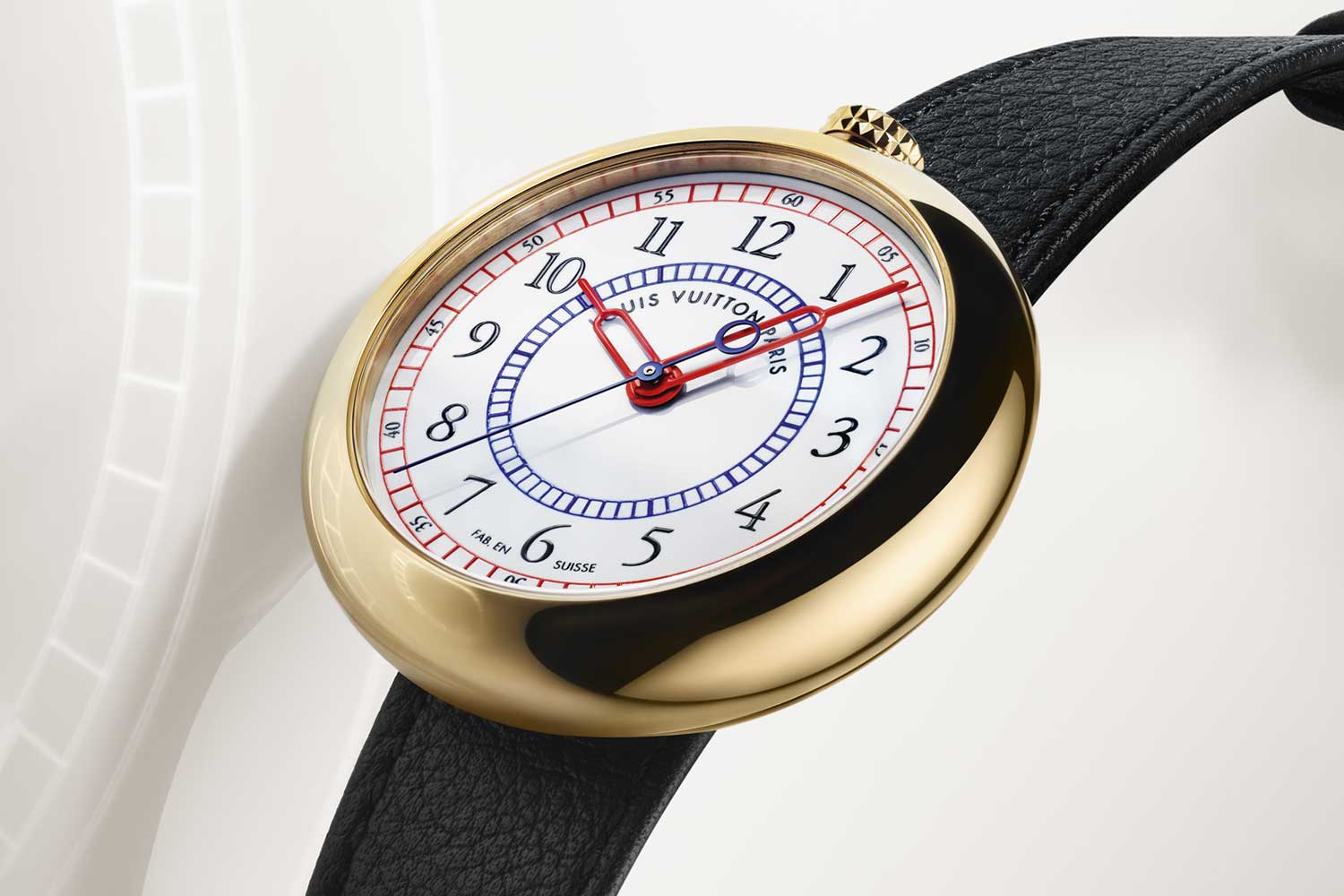
Four decades after its debut, the original Louis Vuitton watch is back in the form of a new Monterey that stays true to the aesthetic codes of the 1988 original
On the dial, the graphic language returns: twin scales for hours and minutes, accents in red and blue, a crisp rhythm of numerals around an immaculate field. The difference is in the material. Where the original relied on printed lacquer, the new watch uses white Grand Feu enamel on a precious-metal base, building color and depth through multiple firings. The hour and minute hands are lacquered red in a minimalist syringe form, with a blued steel seconds hand — small decisions that move the watch away from “retro” and toward “resolved.” Two inscriptions — “FAB. EN SUISSE” and “LOUIS VUITTON PARIS” — anchor the dial’s identity.
Under the surface, the shift from quartz to an in-house automatic movement changes the Monterey’s tempo entirely. The Caliber LFTMA01.02 beats at 28,800vph with a 45-hour reserve and finishing that is confident rather than ostentatious. The maison has decided not to put the mechanicals on show — you can feel the mechanical quality every time you wind or set it, without the need for a display back. The case remains closed, a quiet statement of priorities.
Hegi expands on the balancing act: “This watch represents a symbiosis between the old and present, respecting the design and spirit of the original while reinterpreting it for today. We retained the polished ‘pebble’ spirit, the unique leather attachment and the iconic crown at 12 o’clock, all hallmarks of the 1988 Monterey. This white enamel, with its enamel decals, is not only a tribute to enduring craftsmanship but also offers a brilliance, tone and warmth that will last over time.”
What makes the new Monterey’s enamel dial exceptional?
Grand Feu enamel doesn’t sit on the metal like paint; it fuses with it, and the process is very involved. It begins with screened enamel powders — silica, minerals, metal oxides — cleaned of impurities. A white gold baseplate is prepared to accept the first whisper-thin coat, which is then fired in a kiln. The cycle repeats for multiple coats to build depth and evenness. Then comes vitrification — repeated firings at around 720°C to transform the surface into something that looks almost liquid. Only then are the colors added via enamel stamping in blue, red and black, each requiring its own sequence of lower and higher temperature firings to set and stabilize. Roughly 20 hours of human time goes into a single dial. The end-result is not clinical white, but the kind of white that reads warm and dimensional.
White enamel is among the most demanding surfaces to work with in watchmaking because it shows everything. Any dust, unevenness, or firing flaw is immediately visible to the naked eye. At the same time, it’s precisely that difficulty which gives white enamel its appeal. When executed well, it delivers a clarity and depth that lacquer or printed dials cannot match, and it retains its color and finish for generations without fading. On the Monterey, the use of white enamel highlights the watch’s graphic design with lasting precision and balance, complemented by the historic signatures “FAB. EN SUISSE” and “LOUIS VUITTON PARIS,” which anchor the piece in both Geneva and Paris.
Lug-less cases aren’t that rare anymore, but the Monterey case still stands out. Eliminating conventional lugs gives you an uninterrupted edge and a self-contained volume; the watch wears closer to the wrist with less visual clutter. Louis Vuitton keeps the original attachment concept but adds a modern quick release so you can swap straps without tools. The crown at 12 isn’t just nostalgia for pocket watches; it re-centers the watch’s vertical axis and gives the fingers better purchase.
The case is produced and finished in-house at La Fabrique des Boîtiers Louis Vuitton, where each surface is carefully polished in multiple stages to achieve a consistent, uniform gloss. Instead of an exhibition back, the Monterey keeps its case closed, in line with the original 1988 design. Each example is individually numbered — “1 of 188” — with the engraving discreetly placed beneath the strap attachment point.
Inside the LFTMA01.02 automatic caliber
The LFTMA01.02 is an in-house automatic built at La Fabrique du Temps Louis Vuitton, beating at 4 Hz with a 45-hour reserve. The finishing vocabulary is restrained: a circular-grained mainplate, sandblasted bridges and micro-sandblasted bevels that catch light. The 18K rose gold rotor carries V-shaped notches — a subtle nod to Louis Vuitton’s Monogram language without literalizing it. Look closely and you’ll find the poinçon “LFT” on the barrel, the hallmark of La Fabrique du Temps Louis Vuitton and a discreet mark of internal standards.
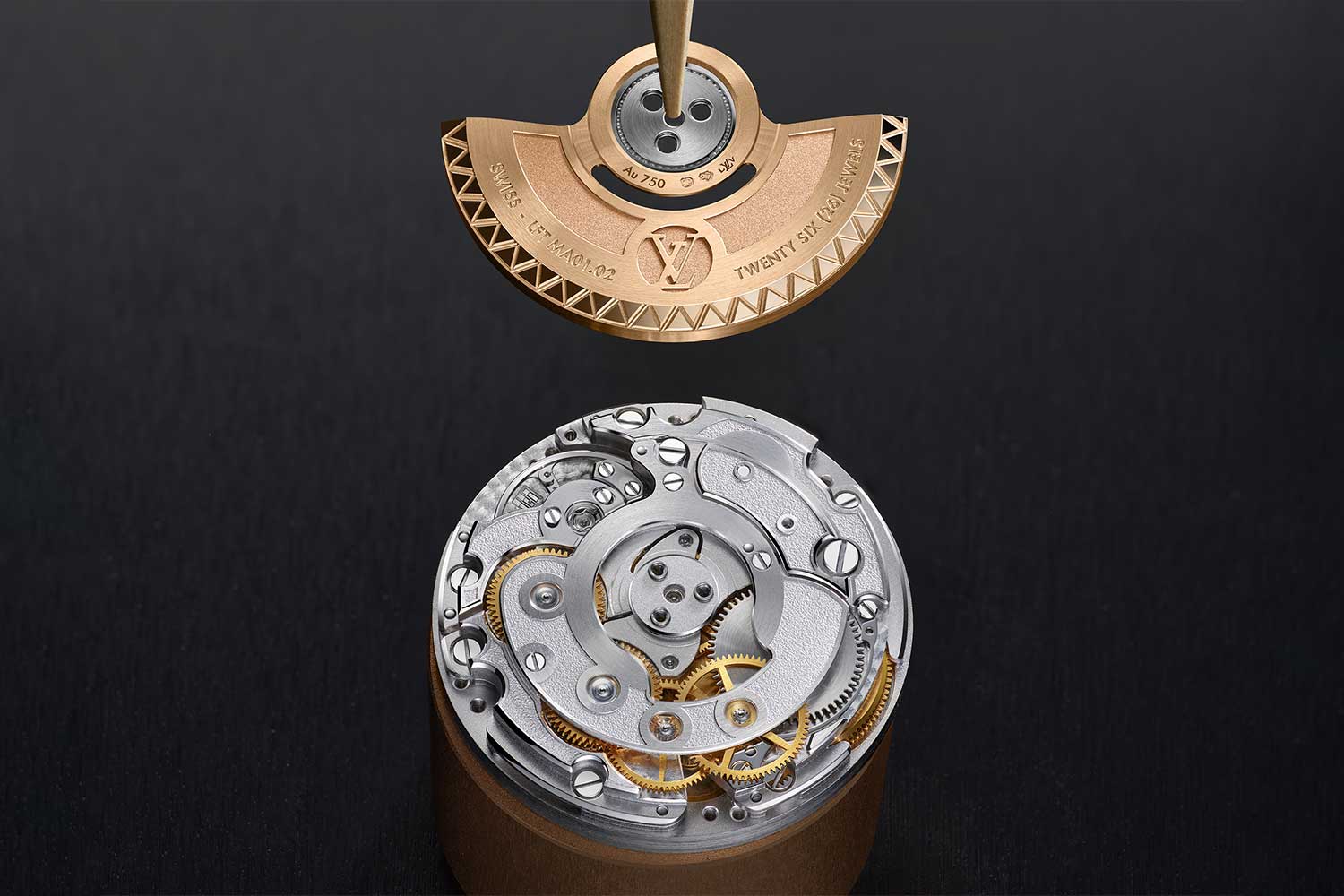
One of the biggest changes for the new Monterey is the shift from a quartz to an automatic movement. The case remains closed to respect the design and spirit of the original
The backstory matters. La Fabrique du Temps was founded in 2007 by watchmakers Michel Navas and Enrico Barbasini, two of the best complication specialists, with resumés that include Patek Philippe, Gérald Genta and key chapters in Bvlgari’s modern renaissance. Louis Vuitton acquired the workshop in 2011 and built it out into a true manufacture, responsible for end-to-end watchmaking and behind pieces like the Tambour Spin Time, the Voyager Flying Tourbillon with Poinçon de Genève and the Carpe Diem automaton that won the Grand Prix d’Horlogerie de Genève’s Audacity Prize in 2021. The Monterey’s caliber belongs to that lineage in spirit: clever, disciplined and secure enough not to demand a glass back to prove it.
It’s also part of a broader Louis Vuitton pattern: pairing expressive design with quietly serious mechanics. Spin Time took a visual idea — rotating cubes — and executed it with engineering subtlety. Carpe Diem turned a skull automaton into an award- winning statement by hiding technical fireworks behind smooth animation. The Monterey’s new movement continues this attitude: the craft is there, but it whispers instead of shouting.
The attitude comes through in decisions: keep the case closed, keep the finishing intelligent rather than flashy, build tactile quality into the crown and winding train. This is what happens when a design-forward object is given a movement equal to it in temperament — calm, correct and durable.
One way to read the Monterey’s return is as a flex: a fashion house now mature enough in watchmaking to revisit its first idea at a much higher level. Another is to see it as a stitch in a longer thread that runs from Gae Aulenti’s pebble to the Tambour drum, from Spin Time’s cubes to Carpe Diem’s grin. Louis Vuitton has consistently used watches to explore how objects can carry ideas — travel, modernity, audacity — without defaulting to someone else’s tradition. The Monterey’s re- edition lands not as nostalgia, but as proof that the design clarity of 1988 holds true in 2025.

Made at La Fabrique des Boîtiers, the Monterey’s case is polished to a uniform gloss with a closed-backed like the 1988 original
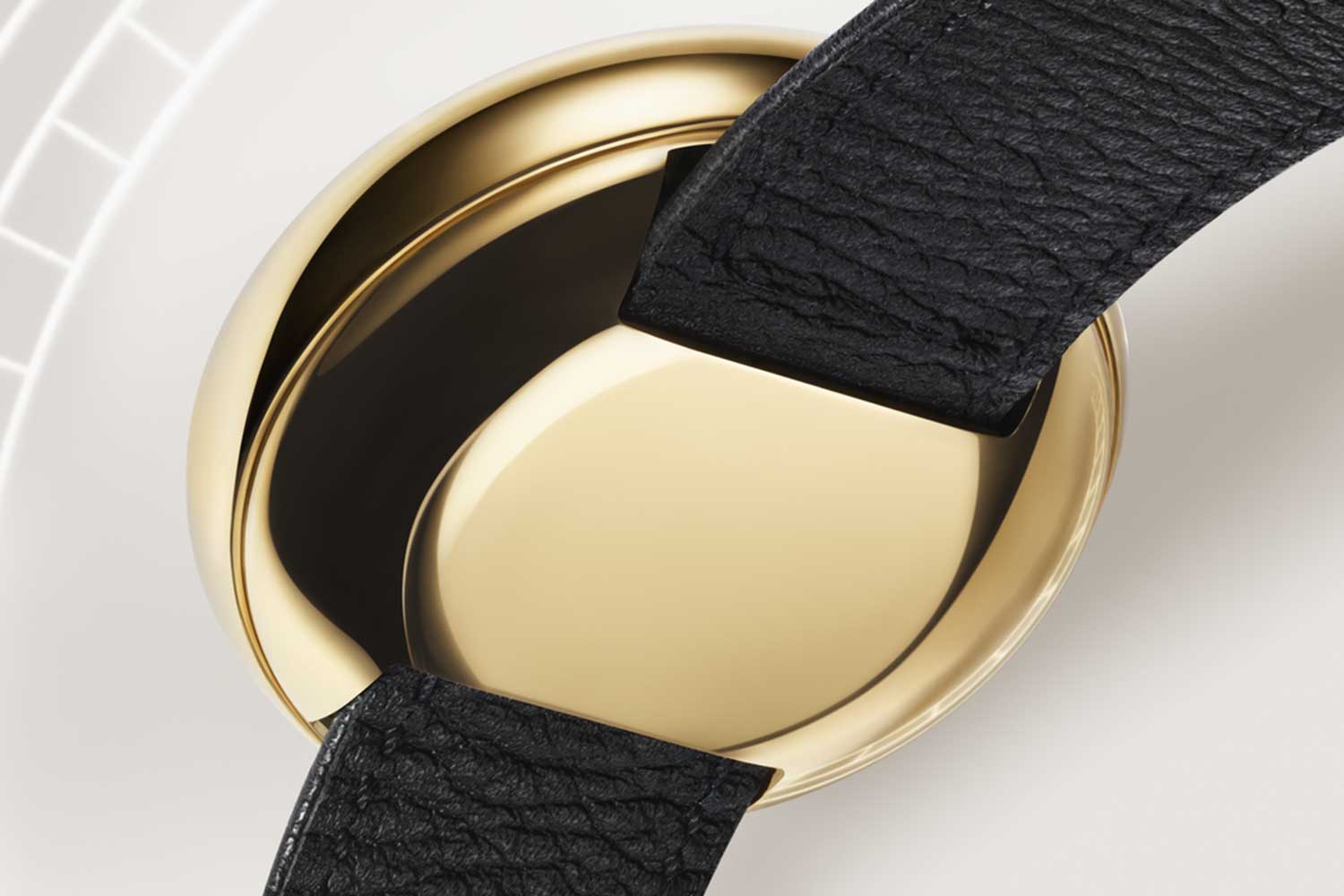
A modern quick release system allows the strap to be easily swapped out without the need for special tools
It also reframes the IWC collaboration behind LV II. What began as a pragmatic alliance to industrialize ceramic case production has, over decades, turned into Louis Vuitton’s in- house capability to solve problems at manufacture level — from case architecture to enamel firing to movement design and strap integration. The lesson is simple: learn from partnerships, then build your own culture of making.
On the wrist, the Monterey stands out for its distinctive form and balanced proportions. The 39mm case wears compact thanks to its lug-less construction, which keeps the watch close to the wrist. The crown at 12 o’clock is comfortable in daily wear, avoiding the pressure points that side crowns can sometimes create. The white enamel dial provides clarity and depth, while the red and blue accents add visual structure. It’s a statement piece for people who don’t need to announce themselves.
Monterey on the Market
Limited to 188 pieces, the new Monterey is, by definition, scarce, but scarcity isn’t the only hook. This is a historically significant Louis Vuitton design, re-expressed with materials and craft that will age properly: enamel that won’t fade, polished volumes that will still read as a single plane of light decades from now, a movement built to run quietly and correctly. If you care about design provenance and you like your watches to be objects first, this is a satisfying proposition.
The market context reinforces the Monterey’s significance. Original pieces only appear occasionally at auction, and when they do, they attract attention well beyond traditional watch circles. Collectors value not just their rarity but their authorship, linking back to Aulenti and LV’s bold first step into watchmaking. The Monterey appeals to a broad audience — architects, designers, fashion historians and watch enthusiasts — who recognize it as a design icon as much as a timepiece. The 2025 re-edition gives those collectors the chance to enjoy the same spirit in a modern watch, executed with today’s craft.
Over the decades, the Monterey has earned a reputation as one of the true hidden gems of late 20th century watch design. When early examples surface at auction in Geneva or Hong Kong, they generate far more conversation than their estimates suggest. Collectors understand that these were not just Louis Vuitton’s first watches, but design objects authored by one of the great architects of her generation. That pedigree makes them highly desirable today.
What’s most striking is the breadth of interest. It isn’t only traditional watch connoisseurs who chase Montereys, but also architects, designers and fashion collectors who recognize in them the same daring spirit that defines Louis Vuitton’s trunks or ready-to-wear. In private sales, they are snapped up almost instantly. The 2025 re-edition arrives into this context — not as a curiosity, but as a natural continuation of a cult classic whose appeal has only deepened with time.
If you loved the original Monterey for its outsider confidence, the new watch gives you that line, tightened. If you’re discovering it fresh, you get the same idea elevated with craft that was out of reach in 1988. Either way, the reboot feels earned. The Monterey doesn’t return to shout about a logo; it returns to demonstrate what a design-led watch can be when the manufacture behind it has grown into its ambitions.
“Reinterpreting a creation means respecting its design and spirit,” Hegi says. The new Monterey takes that seriously, staying faithful to the original while elevating it with today’s materials and know-how. It shows how Louis Vuitton can honor its history in watchmaking while demonstrating the maturity and confidence of a true manufacture.
Tech Specs: Louis Vuitton Monterey
Movement: Self-winding Caliber LFTMA01.02, developed and finished at La Fabrique du Temps Louis Vuitton; rotor in 18K rose gold with V-shaped notches referencing LV’s Monogram; discreet poinçon “LFT” engraved on barrel; 45-hour power reserve
Functions: Hours and minutes; central seconds
Case: 39mm; lug-less “pebble” in hand-polished 18K yellow gold,; closed caseback with limited edition number (“1 of 188”); crown at 12 o’clock with Clous de Paris knurling for grip
Dial: White Grand Feu enamel on white gold base, featuring historic signatures “FAB. EN SUISSE” and “LOUIS VUITTON PARIS”; typography and scales in red, blue and black enamel decals; red lacquered syringe-style hands for hours and minutes; blued steel seconds hand
Strap: Integrated leather with hidden quick-release system
Price: Upon request
Availability: Limited edition of 188 numbered pieces worldwide
Louis Vuitton

